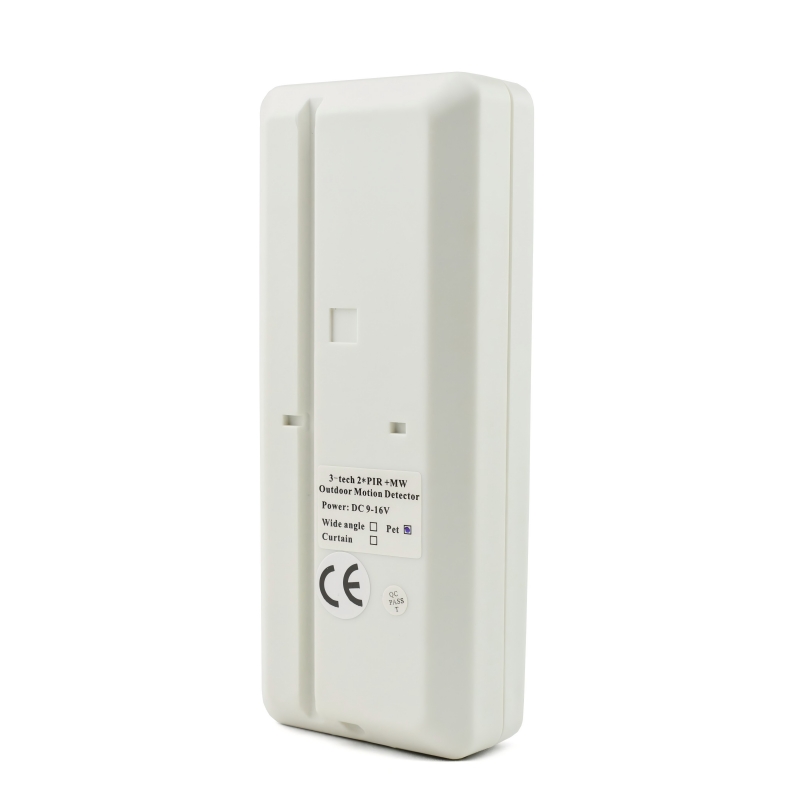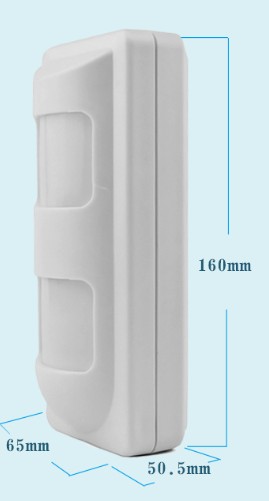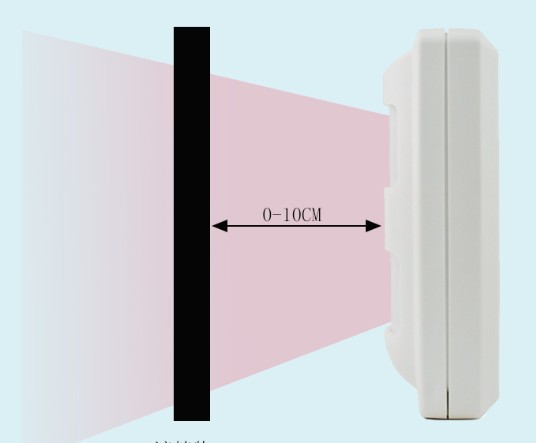How to Prevent False Alarms with Pets Using PIR Sensors?
Home security is no longer just a luxury—it’s a necessity. But for pet owners, traditional motion detectors can be a source of frustration. Cats jumping on furniture or dogs walking through a hallway often trigger false alarms, leading to unnecessary stress and mistrust in your system. Fortunately, advancements in security technology have made it easier to protect your home without compromising your pets’ freedom. In this article, we’ll explore how PIR alarm sensors for pets work, what to consider when installing them, and how to effectively prevent false alarms with pets using the right wired motion detector for alarm systems.

Understanding PIR Alarm Sensors and Pet Immunity
Passive Infrared (PIR) sensors detect motion by picking up infrared heat signatures. When something warm—like a human body—moves across the sensor’s field of view, it triggers an alarm. However, standard PIR sensors can’t distinguish between a person and a pet, especially if the pet is large or moves quickly.
This is where the motion sensor with pet immunity comes into play. These devices are designed to ignore pets under a certain weight threshold (commonly 20–80 lbs) while still detecting actual human intruders. They accomplish this by using:
Dual-element sensing
Shape and size detection algorithms
Multi-level zones that analyze height and movement patterns

Why Choose a Wired PIR Alarm Sensor for Pets?
While wireless systems are convenient, wired security motion detectors remain the top choice for those looking for stable, interference-free performance, especially in larger homes or professional setups. A wired motion detector for alarm systems offers several benefits:
Reduced false alarms due to stable power and data transmission
Better compatibility with legacy or advanced alarm systems
No reliance on batteries—meaning no downtime
More difficult to tamper with or disable
For pet owners, using a wired PIR alarm sensor for pets ensures your security setup is dependable and consistently accurate.

Key Features to Look for in Pet-Immune Motion Sensors
When choosing a motion sensor with pet immunity, look for these features to ensure optimal performance:
1. Weight Threshold Settings
Choose a sensor that allows for adjustable weight thresholds so you can tailor it to your pet’s size.
2. Height Installation Guidelines
Proper installation height (typically 7–8 feet from the floor) ensures pets stay out of the sensor’s detection zone while humans remain within it.
3. Sensitivity Adjustment
Fine-tuning sensitivity settings helps minimize false triggers caused by pets, small movements, or temperature fluctuations.
4. Dual Sensing Technology
Some advanced wired motion detectors for alarm systems use a combination of infrared and microwave sensors to verify movement and reduce false alarms
Installation Tips: How to Minimize False Alarms
Even the best PIR alarm sensor for pets won’t work as intended without proper installation. Here’s how to get the most out of your system:
✔ Mount the Sensor at the Right Height
Install the sensor according to manufacturer guidelines to keep your pet below the detection zone. For instance, placing the sensor at 7.5 feet can allow it to detect adult humans while ignoring small dogs or cats.
✔ Avoid Aiming at Furniture
If your pet likes to climb or jump, don’t aim the sensor at beds, shelves, or furniture they frequently use.
✔ Use Sensor Curtains or Masking
Some PIR sensors come with built-in "curtain" features or masking templates that block detection in specific zones—use these to exclude pet pathways.
✔ Keep the Sensor Clean
Dust, insects, or even cobwebs can interfere with infrared sensors. Regular maintenance ensures consistent accuracy
Choosing the Right Location in Your Home
Strategic placement of your wired motion detector for alarm systems is key. Install sensors in areas where an intruder would most likely pass—such as entryways, hallways, and staircases—but avoid rooms where pets spend most of their time.
If complete coverage is needed in pet-occupied areas, consider using pet-immune sensors in combination with door/window contacts or glass-break detectors for layered security
Final Thoughts:
For households with pets, achieving reliable security doesn’t mean choosing between protection and peace of mind. With today’s advanced PIR alarm sensors for pets and well-installed wired security motion detectors, you can keep your home safe without worrying about false alarms caused by your furry friends.
Choosing a high-quality motion sensor with pet immunity, installing it correctly, and maintaining your system regularly are the keys to effective, pet-friendly home security. Whether you're upgrading an existing system or building a new one, these smart solutions ensure that every member of the family—two-legged or four—is protected.
motion sensor with pet immunity wired motion detector for alarm systems PIR alarm sensor for pets
 简体中文
简体中文
